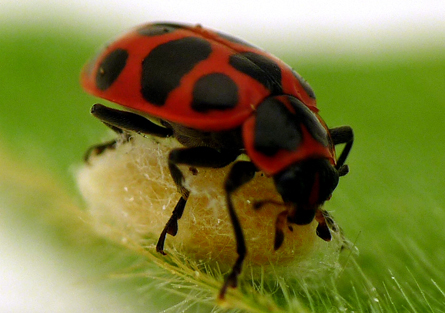Life
The perils of insect enslavement, bats’ hairy flight and crustacean-inspired optics in this week’s news
Hidden cost of bodyguards
Enslaving a bodyguard has its costs. A wasp species that turns beetles into bizarre protectors of young wasplings pays a price in later egg-laying, researchers in Canada and France report in an upcoming Biology Letters. A larva of the parasitic wasp Dinocampus coccinellae grows almost to maturity inside a spotted lady beetle. Then the wasp larva bursts out and wraps itself in a cocoon attached to the beetle’s legs. The beetle spends a week or so still alive, hunkering over the cocoon and deterring attacks on it. Yet parasites that kept beetles enslaved for longer times later produced fewer eggs of their own, a possible tradeoff in using resources for slave-making versus baby-making. —Susan Milius

Bats’ smart hairs
Microscopic hairs growing out of microscopic domes on bat wings play a previously unappreciated role in the animals’ deft maneuvering. Biologists had noticed the hairs a century ago, but new brain studies are revealing that puffing air at the hairs sets nerves firing, with reactions varying according to airflow. And removing hairs from the trailing edge of bat wings left bats flying less acrobatically, researchers report online June 20 in the Proceedings of the National Academy of Sciences. —Susan Milius
Sexy twist on light
Shrimp foreplay has inspired a new way to twist light that could be useful for 3-D displays, DVD readers and other optical gadgets. Wave plates, devices that change the polarization of light, are usually limited to a specific range of wavelengths. But inspired by the alignment of filaments in the eye cells of Odontodactylus scyllarus — a crustacean that uses polarized light as a mating signal — researchers in the United States and Taiwan have built a wave plate that works over the entire visible spectrum. The device, described online June 21 in Nature Communications, is made of sheets of upright and tilted nanorods stacked in lasagna-like layers. —Devin Powell






